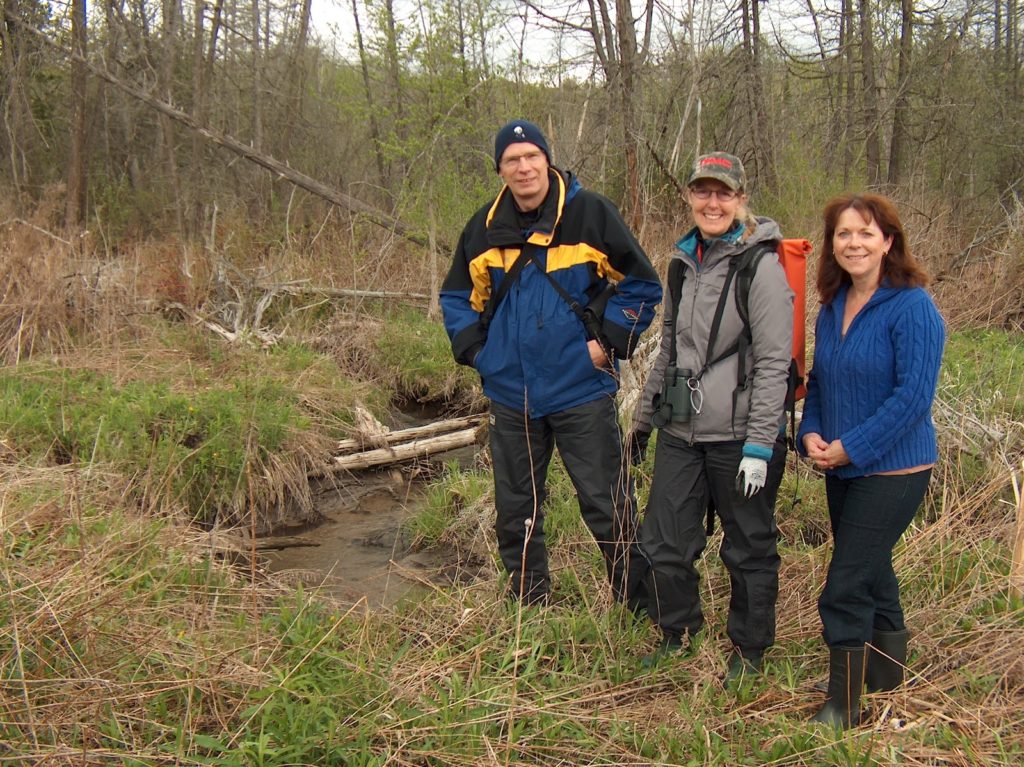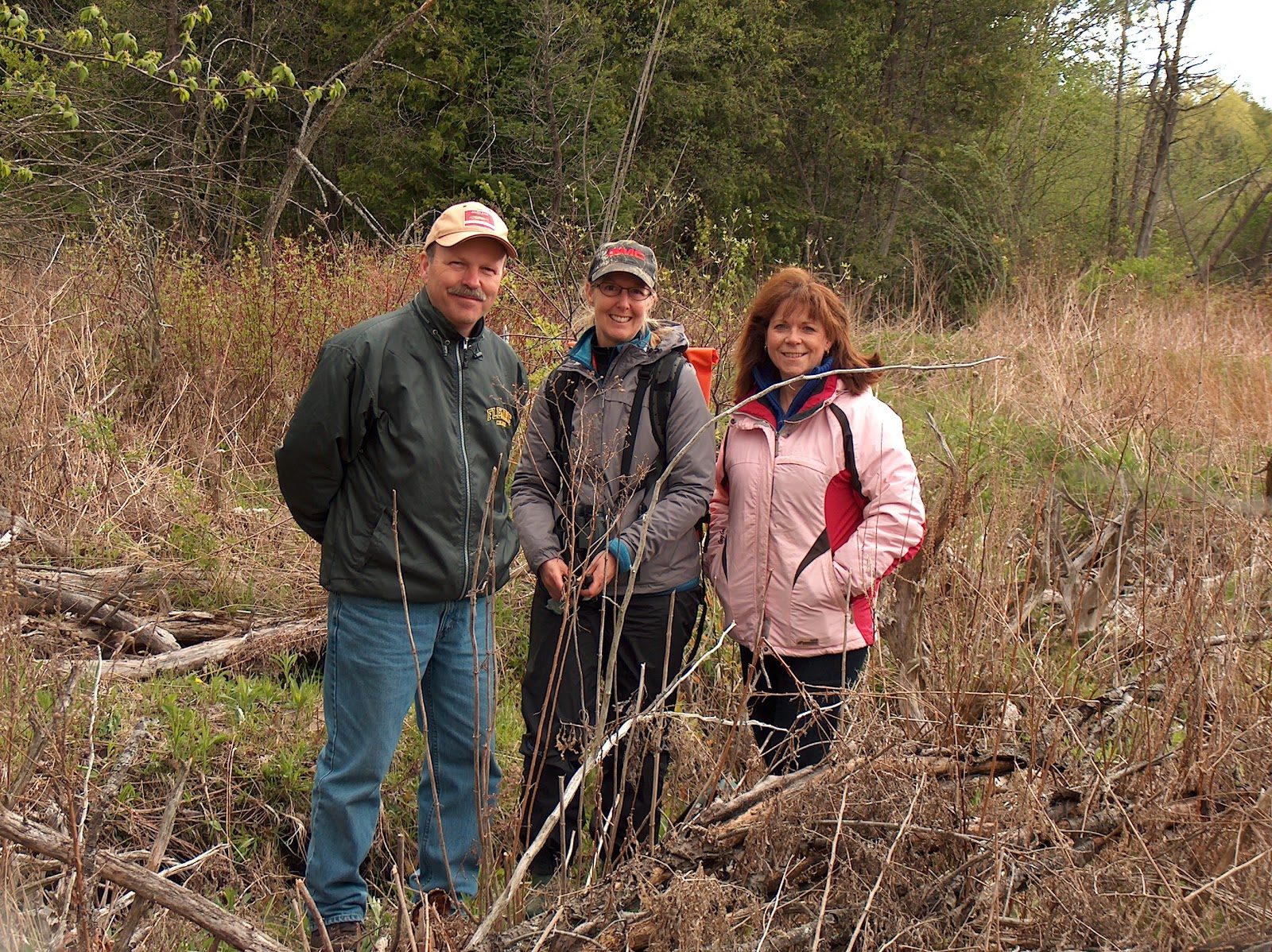Instead of breakfast in bed, Councillor Lesley Parnell chose to spend her Mother’s Day morning exploring the periphery of Harper Park. Guided by the expertise of recently retired Fleming College Fish and Wildlife professor, Don McLeod, Lesley joined Kim and Mark Zippel of the HPSI to gain some “boots on the ground” knowledge of Harper Park, Creek and Wetland.
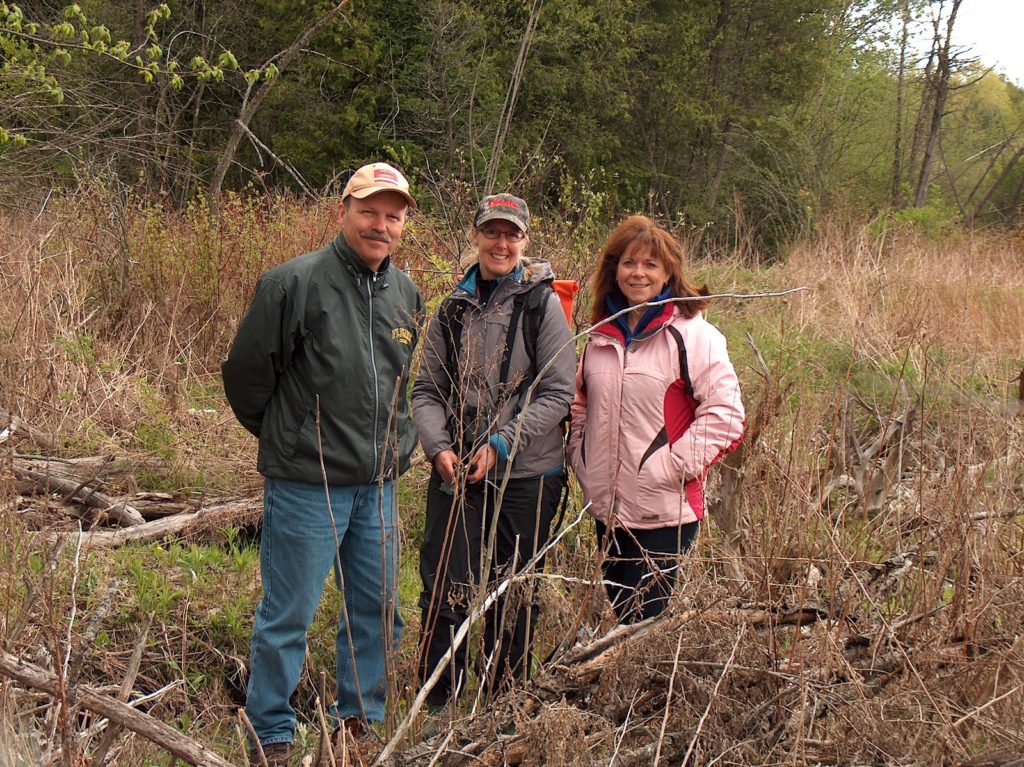
One of the first stops along the trail was a beaver dam that Don had noted on a previous exploration in March. The dam had been taken down and we were able to see the dynamics of a rapid transition from beaver pond back to meandering stream. However, recent tree cuts in the vicinity may indicate that the industrious Castor canadensis repair team is poised to rebuild…
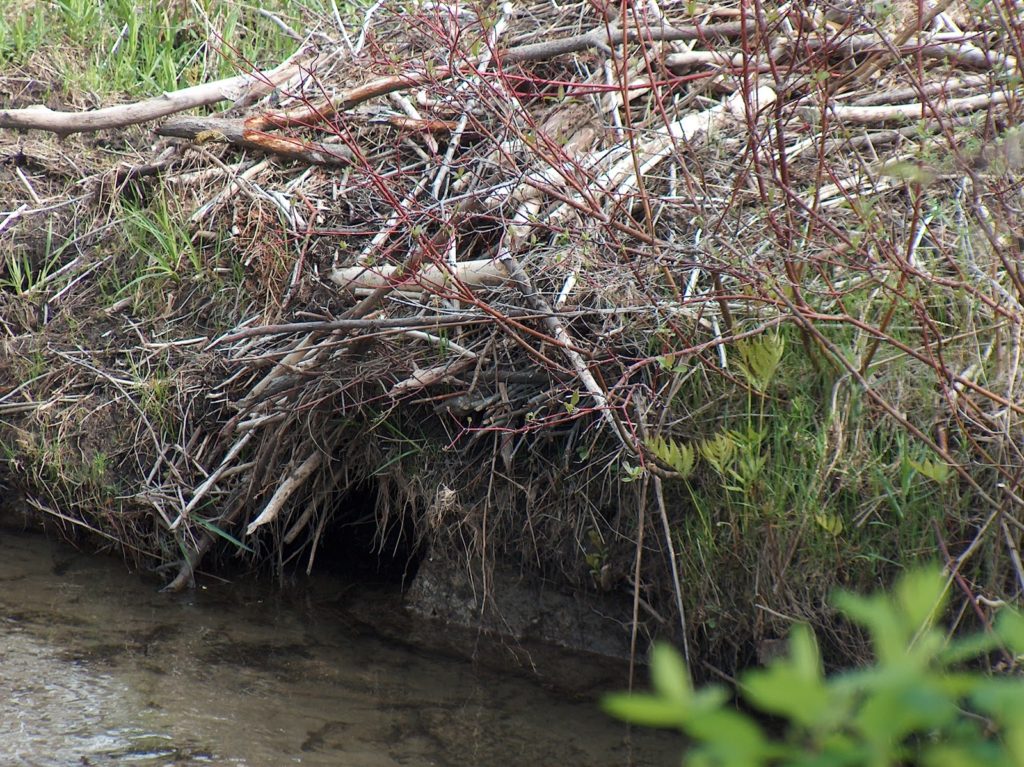
Retracing our path to Harper Road, we re-entered the park via the narrow buffer strip alongside of the main branch of Harper Creek, trekking west of the Harper Road crossing. This route quickly places you on what appears to be the lane to the original farm house. Vernal pools lie alongside the north side of the raised lane which leads into an open meadow and the foundation of what was likely the farmhouse. Old farm implements lay half buried in the soil, and lilacs and apple trees signal the location of the fieldstone foundation of the house. The trail then leads back to another stone foundation, the barn. The slope to the mow is easy to find, as this historical homestead is slowly recreated in your imagination.
To the south of the meadow, the land slopes back toward the creek and its wet shoreline. The riparian vegetation was stunning as red osier dogwood arose from a solid mass of brilliant yellow marsh marigolds.
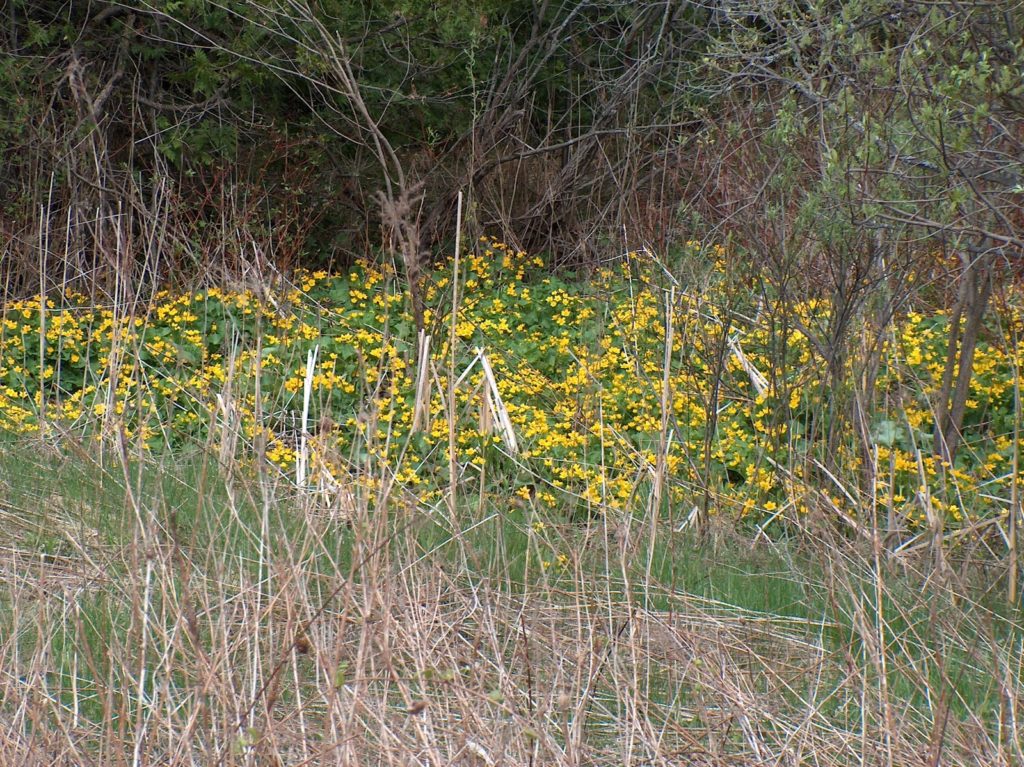
As we walked in a clockwise direction around the meadow, the potential for a dog friendly, historical walking trail was discussed for this area of the park. With eyes on the ground envisioning a trail system, we soon discovered that both deer and coyote were frequent visitors to the meadow. Don gave us a quick tutorial on differentiating dog from coyote scat, as he pointed out bits of undigested hair, and bone fragments big enough to be from a rabbit.
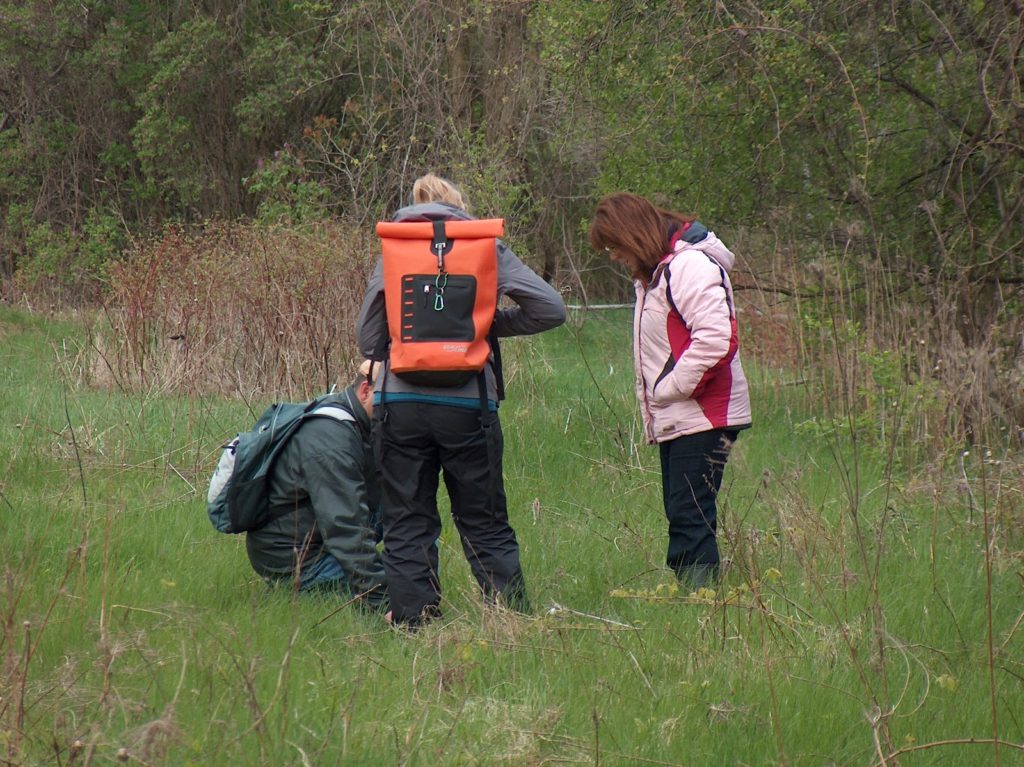
The meadow is also a great place to bird. Insects from the wetlands bring in fly catchers such as early arriving Eastern Phoebes. Northern Flickers and Cardinals; Purple Finches and American Gold Finches; and Pileated and Downy Woodpeckers have also been seen in the meadow this spring. I would not be surprised if the dance of the ‘Timberdoodle’, also known as the mating ritual of the American Woodcock, is a common occurrence at dusk and dawn in this meadow each spring – a good reason for a evening visit!
Unfortunately, the meadow is also full of poison ivy and summer will see it growing much larger and becoming a serious problem for those susceptible to its oils and pollen. As the meadow is within a sensitive protected natural area, some expertise would be necessary to alleviate the hazard for visitors to the park.
A member of the Peterborough Rotary Club, Councillor Parnell suggested that the creators of the Rotary Greenway Trail may be an invaluable source of knowledge when it comes to dealing with hazards such as poison ivy.
We concluded our morning with a walk up Harper Road to the Cruikshank property, located at the corner of Harper Road and Rye Street. Here, Councillor Parnell observed brook trout fry in the North Tributary of Harper Creek. We discussed the importance of groundwater to the spawning and nursery habitat of these native fish, and the need to prote
ct the source waters of the northeastern portion of the locally significant Harper Wetland, through City acquisition, or conservation easement, of private lands.
As I mentioned in a previous post, it is tough to care about a place if you haven’t been there to understand why it is special, and how it fits in to the tapestry of the surrounding environment.
Hats off to our Otonabee Ward Councillor for taking time to experience Harper Park, and for giving us her full attention and enthusiasm, before spending the remainder of her special day with her family.
Council will be making some important decisions regarding the future of Harper Park, Creek and Wetland in the weeks and months to come, but whatever the outcome, we can be assured that Councillor Parnell’s vote will be an informed one.
